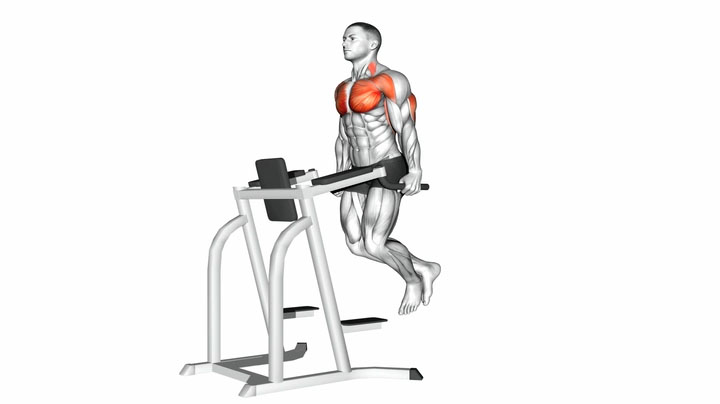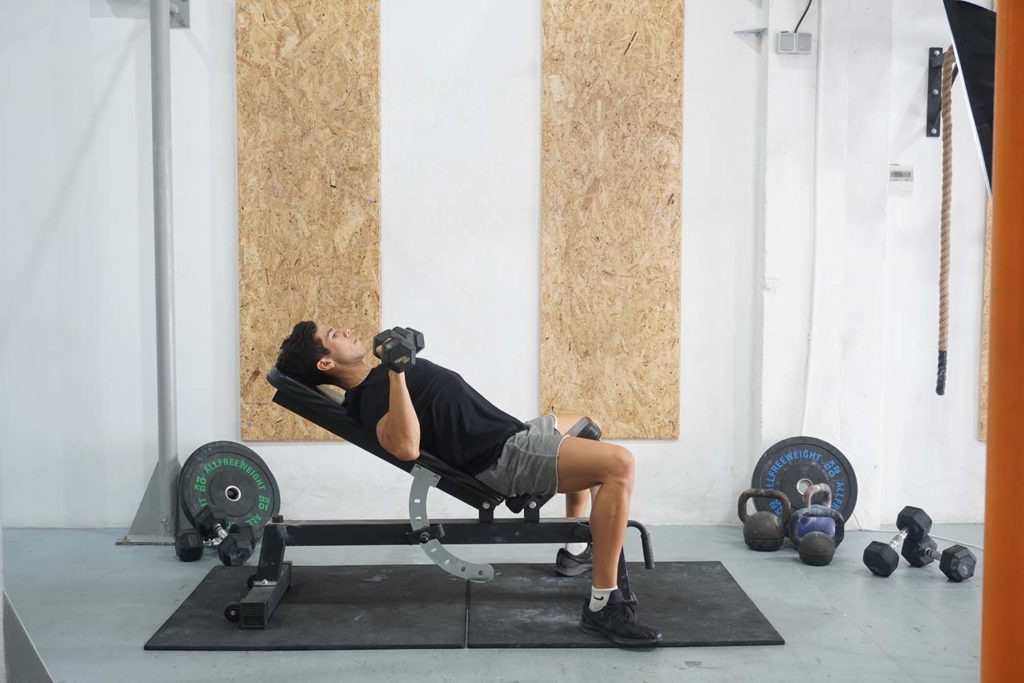How is the One-Arm Push-Up Beneficial
Push-ups don’t get nearly as much love and respect as they deserve. Most people have done the exercise at some point, but few stick to push-ups over the long run. One common reason for not doing the movement is that it gets too easy after a while.
While classic push-ups can start feeling too comfortable, the beauty of the exercise is that you can pick from countless effective variations. One such option is the one-arm push-up. The movement is challenging and beneficial because you have to support your upper body on a single arm, which demands much greater strength and stability.
The one-arm push-up is also great because it makes you more athletic and better able to handle certain everyday tasks. For example, developing your pressing strength makes lifting weights above your head easier.
How to do a One Arm Push Up
- Get down on all fours with your knees underneath your hips and shoulders, elbows, and wrists in a straight vertical line. Have your hands at a shoulder-width distance or slightly wider.
- Engage your abs and extend your knees to support your lower body on your toes. Your feet should be slightly wider than hip-width apart.
- Once in position, squeeze your glutes and bring your shoulder blades back. Your shoulders, hips, knees, and ankles should be in a straight line.
- With your body tense and in position, lift one hand off the floor and bring it back behind your back.
- Take a breath and lower yourself by bending your supporting arm. Go down as much as you can––ideally, until your chest is a couple of inches from the floor.
- Extend your arm to get back to the starting position and exhale.
- Once finished on one side, support your body on your other hand, and perform the same number of repetitions.
What muscles does the one-arm push-up activate?
The primary muscles that work during a one-arm push-up are the pectorals, which cover the front side of the upper torso (1). Both pectoral heads attach to the humerus (upper arm bone) and contribute to numerous upper body activities, including pressing (2). Our pecs produce the most force off the bottom, and their contribution gradually lessens as we extend our arms.
Our tricep is the second muscle that works during one-arm push-ups. The muscle group covers the rear of our upper arms, contributing to shoulder stability and producing elbow extension (straightening), which occurs as we push ourselves up (3).
The shoulders also play a significant role in one-arm push-ups. One of their functions is to offer stability at the shoulder joint, but the anterior deltoid head assists the pectorals and triceps with the pressing.
Several midsection muscles work extra hard during a one-arm push-up due to the increased stability demands. The rectus abdominis, transverse abdominis, internal and external obliques, erector spinae, and glutes flex isometrically to create whole-body rigidity, allowing us to perform the exercise.
Steps to Progress to the One-Arm Push-Up
The essential requirement for mastering one-arm push-ups is performing the two-arm version. Learning how to do the exercise is vital to understanding proper technique and strengthening the necessary muscles. We recommend attempting the one-arm version once you’re comfortable doing at least 15 to 20 regular push-ups in a row.
Your next step in the progression should be to start doing incline one-arm push-ups. For example, you can lean against a wall first and start learning to press yourself with one arm. You can then lean against a kitchen counter to have your body slightly more horizontal. After that, move to a chair, and then––a gym bench. Practice the more accessible versions of the exercise before attempting to do one-arm push-ups on the floor.
Once you go through the above steps, start doing one-arm push-ups on the floor but only complete the eccentric (lowering) portion. Begin at the top and lower yourself as slowly as you can. Then, get back to the top position and lower yourself again. Doing so is a great way to build even more strength and stability for the one-arm push-up.
Variations and Modifications of the One-Arm Push-Up
1. Incline One-Arm Push-Up
Incline one-arm push-ups are the easier version of the exercise and one we recommend using to build strength and stability. Performing the movement at an incline allows you to press a smaller percentage of your weight, making it easier to practice proper technique even if you’re not that strong yet.
2. Eccentric-Only One-Arm Push-Up
Eccentric-only one-arm push-ups are another beginner-friendly variation you can use as a means of improving your strength and stability. Our muscles tend to be stronger in the eccentric portion, so utilizing it can help us develop the concentric strength we need for one-arm push-ups. The objective is to get yourself to the top position, remove one arm, and lower yourself slowly.
3. Wide-Stance One-Arm Push-Up
Wide-stance one-arm push-ups aren’t anything special because the objective is to spread your feet wide. Doing so can be beneficial for those struggling to maintain their balance while learning the one-arm push-up.
Mistakes to Avoid
A common mistake with one-arm push-ups is failing to retract your shoulder blades and keeping them down as you do the exercise. Many trainees start the movement well but gradually allow their shoulders to shrug up. Doing so isn’t good because it puts the shoulders in a compromised position. Avoid the error by consciously keeping your shoulders retracted and re-start a set if you can’t keep them in the position as you do reps.
Another mistake with one-arm push-ups is training through a partial range of motion. Often, trainees would lower themselves a couple of inches and go back to the top. The problem is, doing so makes the exercise unnecessary because you’re looking for ways to make it easier. Learn to train through a full range of motion or do classic push-ups with good technique instead.
The third mistake with one-arm push-ups is allowing your hips to sag as you do the exercise. Many trainees start in a good position but fail to maintain it because their midsection gets fatigued. The problem is, sagging hips create instability and prevent you from doing the exercise effectively. We recommend including more core work if you struggle with maintaining your position. Hip thrusts, decline crunches, planks, and glute-ham raises are excellent options.
Similar Exercises to the One-Arm Push-Up
Chest Dip

Chest dips are one of the most popular and effective bodyweight exercises you can do to strengthen your chest, shoulders, triceps, and core musculature. The objective is to grab a parallel bar, suspend yourself in the air, and maintain a rigid body position. From there, you have to lower yourself (dip) and push back to the top by engaging your upper body musculature.
Incline Bench Press (Dumbbell)

Incline dumbbell bench presses are an effective assistance exercise that strengthens your chest, triceps, shoulders, and midsection. The incline torso position shifts the emphasis to the clavicular head, allowing you to develop your upper chest more effectively (4). You can even make the exercise more identical to one-arm push-ups by holding a single dumbbell at a time.



